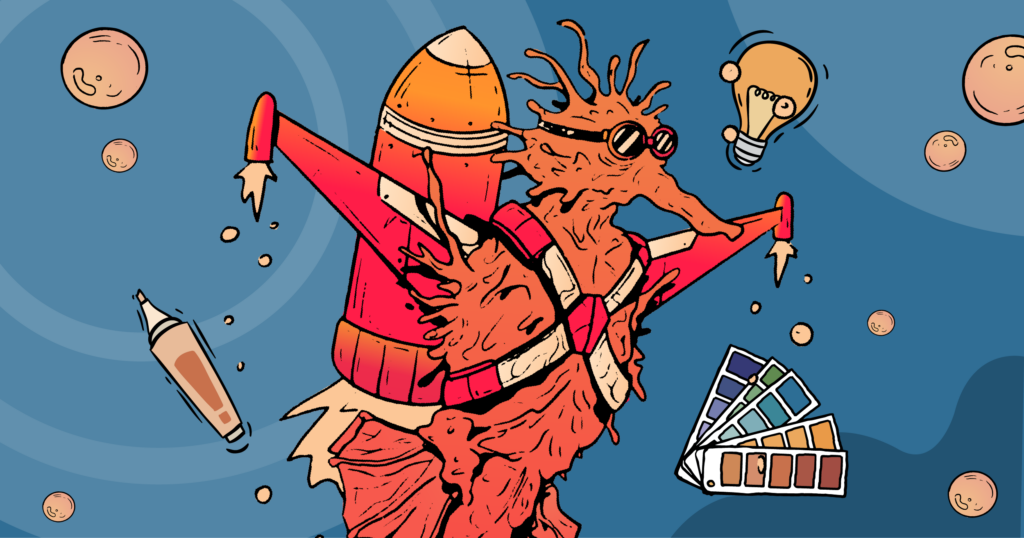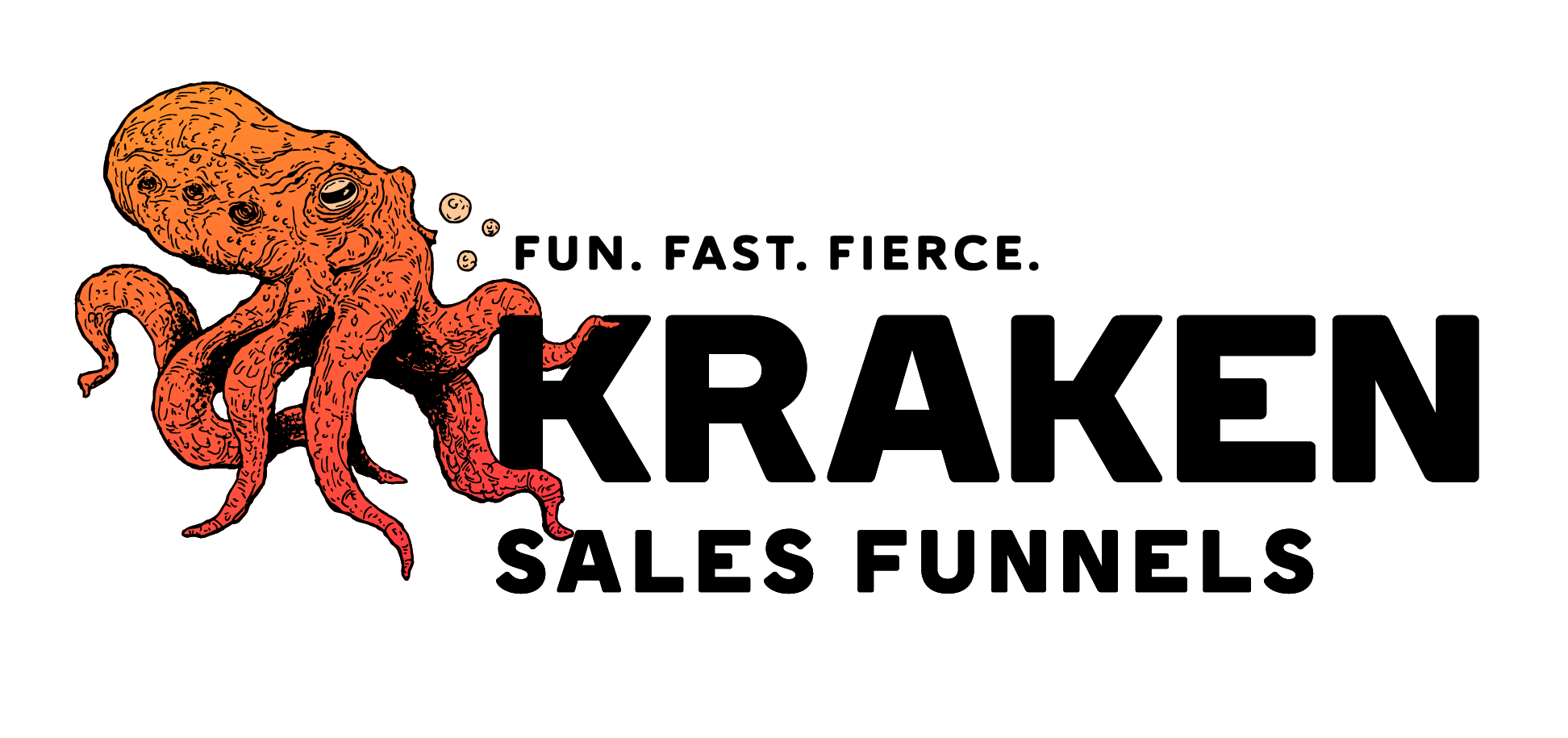Whether you’re hunting down the perfect restaurant for date night, comparing product reviews before making a purchase, or just looking for information, you likely visit many websites every day. And what’s the first thing you notice when you land on a website? You guessed it — its design!
Think about the last time you stumbled upon a website that was so cluttered and confusing you couldn’t find the information you needed. Or how about one that looked like it hadn’t been updated since the early 2000s? It’s frustrating, right? You probably didn’t stay on that website for long.
Good website design is crucial. Not only does it make visitors want to browse your site more, but it also creates a positive impression of your brand, builds trust, and ultimately drives conversions. In fact, research shows that users form opinions about a website’s credibility within milliseconds of viewing it. Not only that, but 94% of first impressions are design-related. Your website design can make or break your business. It’s that simple.
Just as a skilled navigator charts the course for a smooth voyage, crafting a website requires careful planning and attention to detail. It’s one thing to make a functioning website; it’s another to create a seamless user experience that captivates visitors from the moment they arrive. This is where good website design comes into play.
In this article, we dive into practical design tips that can help your website stand out against the competition. We explore how a well-designed website can engage your audience, enhance user experience, and keep your sales ship sailing (try saying that 10 times fast) in the right direction.
Why good website design is so important
First Impressions: Your website is often the first point of contact between you and potential customers. Just like meeting someone in person, you want to make a good first impression. A well-designed website instantly grabs attention and sets the stage for a positive experience.
User Experience (UX): User experience is everything when it comes to websites. Visitors should be able to navigate your site easily, find the information they need quickly, and enjoy their time browsing. Good website design ensures smooth navigation, clear organization, and intuitive functionality, keeping visitors engaged and satisfied.
Credibility and Trust: A poorly designed website can make your business look unprofessional and unreliable. On the other hand, a polished, modern design instills confidence in your brand and builds trust with your audience. According to research by Stanford University, 75% of users judge a company’s credibility based on its website design. People are more likely to do business with a company that has a well-designed website — this probably includes you!
Stand Out From the Crowd: According to statistics, there are approximately 1.8 billion websites on the internet. A design that’s both distinctive and unforgettable acts as your secret weapon, drawing customers to your site and ensuring they stay for the journey.
Conversion Optimization: Ultimately, the goal of your website is to convert visitors into customers or leads. Good website design plays a critical role in conversion optimization by guiding visitors through the sales funnel and encouraging them to take action, whether it’s making a purchase, filling out a form, or contacting you for more information.
Design Tips that Work: Charting a Course for Success
Set Sail with Clear Navigation
A well-structured navigation menu is like a trustworthy compass, directing your visitors to their desired destinations seamlessly and intuitively. Whether they’re seeking information about your products, searching for your contact details, or simply looking to learn more about your brand, clear navigation ensures they can find what they’re looking for without getting lost at sea.
To streamline organization, remember these three rules: simplicity, organization, and clarity. Keep your website menu simple, organized, and easy to follow. Ensure that page titles accurately describe each location, facilitating smooth navigation from one page to the next.
Hoist the Colors of Cohesion
From your choice of colors to typography, from functionality to imagery, maintaining a cohesive design is essential for a memorable and effective website design. Consistency in website design serves as a visual language that communicates the essence of your brand.
When colors flow seamlessly throughout your site, they create a unified identity that resonates with visitors, fostering recognition and trust. Similarly, a consistent typography style enhances readability and reinforces your brand’s personality. By using the same fonts and sizes across pages, you create visual unity that guides visitors effortlessly through the content.
When navigation elements and interactive features remain predictable and familiar, users can navigate the site with confidence, enhancing their overall satisfaction and engagement.
Visual consistency in imagery further reinforces brand identity and narrative. By adhering to a consistent style, such as tone and image type, your website’s story and tone become coherent and compelling, leaving a lasting impression on customers.
Trim the Sails
Just as a ship must shed weight to outrun a fearsome kraken, your website must lose bulky elements for optimal performance. Excessive elements such as unnecessary widgets, oversized images, or redundant text can overwhelm visitors and distract them from your core message. A clutter-free design ensures a seamless browsing experience, allowing visitors to focus on the main content.
By decluttering your website, you not only improve user experience but also enhance site speed and performance. Everything on your website should serve a purpose, even if it’s just to drive the viewer’s eye to another part of the page. If an element on your site is pointless, consider eliminating it. Remember, in web design, less is often more.
Full Steam Ahead
A swift-loading website is akin to a jet boat, ready to navigate effortlessly through the waves of cyberspace. To achieve this efficiency, optimize images, streamline code, and utilize caching techniques. By implementing these techniques, you’ll propel your website forward — giving it the speed it needs to keep visitors from jumping ship.
In addition to optimizing images and minimizing code, consider implementing lazy loading for images and videos to further enhance loading speed. This ensures that content is only loaded when it’s needed, reducing initial page load times and improving overall performance.
If this sounds like unintelligible seaspeak (and you’re a bit of a landlubber), it might be time to enlist an experienced crew. Our team of expert Krakenauts can help optimize your website design and improve speeds — ensuring that you don’t lose potential customers to lengthy load times.
Navigate Responsively
By utilizing responsive design, you guarantee that your website offers an optimal viewing experience for everyone, whether they’re accessing it from a desktop computer, laptop, tablet, or smartphone.
Responsive design not only enhances user experience but also improves your website’s performance in search engine rankings. With search engines like Google favoring mobile-friendly websites, a responsive design can positively impact your site’s visibility and accessibility to a wider audience.
Prioritize mobile optimization to accommodate users accessing your site on smartphones and tablets. With mobile devices accounting for more than half of web traffic, ensuring a seamless experience across all devices is essential for retaining visitors and maximizing engagement.

Steering Towards Seamless Conversions
Before you start designing your website, you should consider how to implement a smooth transition from visitor to customer. After all, you need your website to work for you. Creating a fast, sleek, and aesthetic website is wonderful, but it’s a waste of money if it isn’t converting.
It’s all about creating a user journey devoid of obstacles, where visitors effortlessly navigate toward their desired action, be it making a purchase, subscribing to a newsletter, or completing a contact form.
An effective conversion process encourages visitors to follow through with their actions without hesitation. By simplifying navigation, minimizing form length, and optimizing page loading speed, you can guide users through your website with ease. Clear calls-to-action and intuitive design further enhance the user experience, making it more likely for visitors to convert into customers.
Harness the Power of Visuals
They say a picture is worth a thousand words, and nowhere is this more true than in website design. Visual elements such as images, videos, and infographics can help convey your brand’s message and engage visitors more effectively than text alone.
Choose high-quality visuals that reflect your brand’s identity and resonate with your target audience. Whether it’s showcasing your products in action, introducing your team members, or sharing customer testimonials, visual content can enhance the overall user experience and encourage visitors to explore your website further.
Don’t forget that text can be a visual element as well! Thoughtfully chosen typography can shape the tone and personality of your brand, while strategically placed text overlays on images provide context and emphasis.
Your North Star: Utilizing Your Homepage
If you remember nothing else about web design tips, remember this — many visitors will only look at your homepage. Tell them everything you want or need them to know about your business but keep it short, clean, and visually appealing.
Here are a few tips to help you make the most of your homepage design:
Display the menu clearly: Ensure that your navigation menu is intuitive and easy to use. Organize your menu items logically, prioritizing the most important pages such as About Us, Products/Services, and Contact. Consider using dropdown menus for complex site structures.
Implement branding: Your homepage should prominently display your brand logo and tagline, helping visitors understand who you are and what you offer. Use consistent branding elements such as colors, fonts, and imagery throughout your homepage to reinforce your brand identity.
Utilize visual hierarchy: Arrange content elements on your homepage based on their importance. Use larger fonts, bold colors, and prominent placement for key messages, such as your value proposition or call-to-action (CTA) buttons. Guide visitors’ attention towards important elements using visual cues like arrows or contrasting colors.
Craft a compelling headline: Craft a concise and compelling headline that communicates your unique selling proposition (USP) or the main benefit of your products/services. Make it stand out visually and place it prominently at the top of your homepage to capture visitors’ interest immediately.
Implement engaging imagery: Use high-quality images and videos that resonate with your target audience and support your brand message. Visual content should be relevant, authentic, and emotionally appealing. Consider using sliders or carousels to showcase multiple images or videos in a visually appealing way.
Clear Call-to-Action (CTA): Every homepage should include at least one clear CTA prompting visitors to take the desired action, whether it’s signing up for a newsletter, contacting you, or exploring your products/services. Use contrasting colors and persuasive language to make your CTAs stand out.
Use social proof: Incorporate social proof elements such as customer testimonials, reviews, ratings, or client logos to build trust and credibility with visitors. Place these elements strategically on your homepage to reassure potential customers and encourage them to engage with your brand.
Embrace whitespace and readability: Use ample whitespace to create a clean and uncluttered layout that enhances readability and visual appeal. Break up large blocks of text into smaller paragraphs and use bullet points or numbered lists for easy scanning.
Set up analytics and testing: Continuously monitor your homepage performance using web analytics tools such as Google Analytics. Track key metrics such as bounce rate, time on page, and conversion rate to identify areas for improvement. Conduct A/B tests to experiment with different design elements and optimize for better results.
How Kraken Sales Funnels Can Help
Our team of experts knows just how important it is to have a website that not only catches the eye but also keeps visitors engaged. From crafting beautiful web design elements to creating clear navigation and lighting-fast load times, we’ll help your website make a splash.
But at Kraken, we’re not into flashy web design that doesn’t convert. We’re all about helping you reel in those visitors and making your website work for you. Whether it’s through targeted ads, social media strategy, or captivating content, we’ll help you connect with your audience and turn those leads into loyal customers.
As a full-service marketing agency, we’re your one-stop shop for all things digital marketing. So why settle for a website that just looks pretty? Let Kraken Sales Funnels help you take your online presence to the next level and make waves in your industry. Get in touch today.



